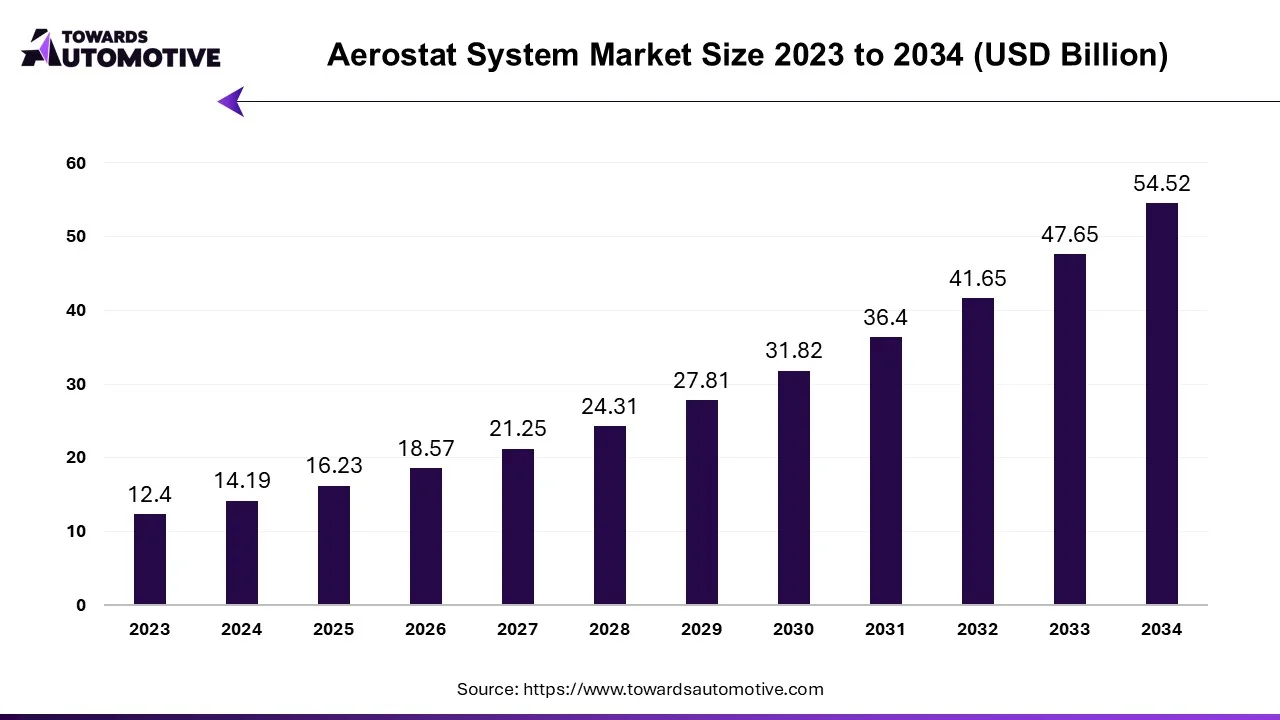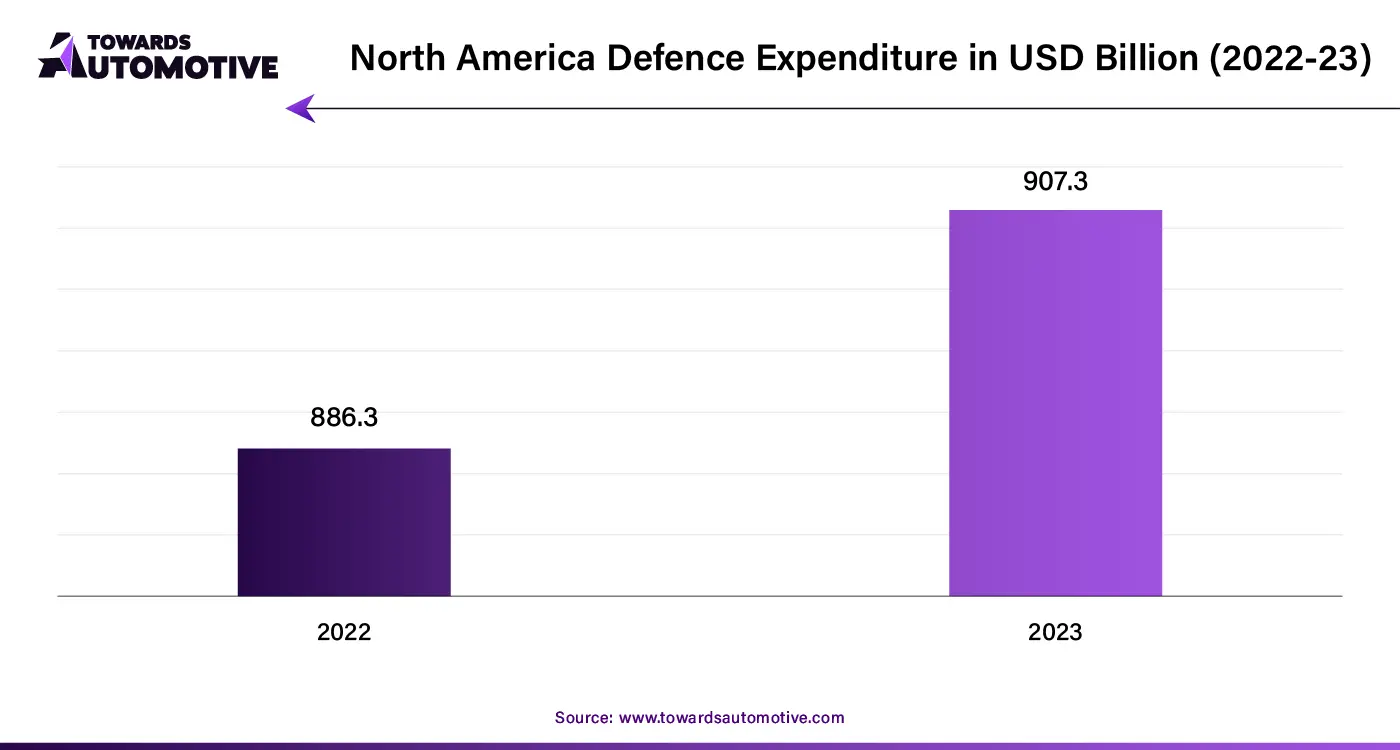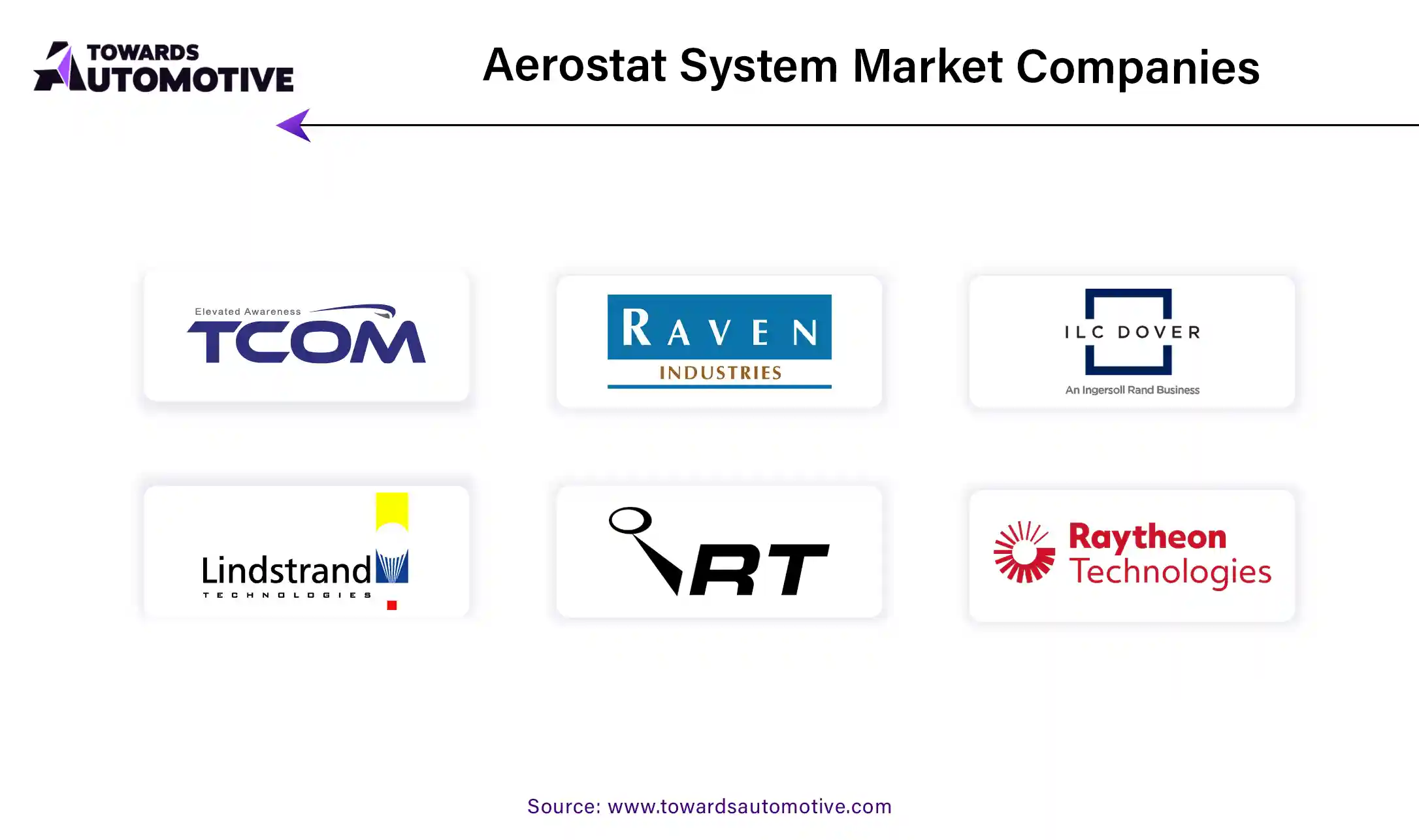April 2025
The aerostat system market size is calculated at USD 14.19 billion in 2024 and is anticipated to reach around USD 54.52 billion by 2034, growing at a CAGR of 14.41% from 2025 to 2034.

Unlock Infinite Advantages: Subscribe to Annual Membership
The aerostat system market is experiencing significant growth due to the increasing demand for surveillance, monitoring, and communication solutions in various sectors such as defense, homeland security, telecommunications, and environmental monitoring. Aerostats, also known as tethered balloons or airships, are used for providing persistent surveillance capabilities, offering a cost-effective alternative to satellites and traditional aircraft for wide-area monitoring. These systems are capable of carrying cameras, sensors, communication equipment, and radar systems at high altitudes, providing continuous coverage over a large geographical area. The aerostat system market is primarily driven by the need for enhanced security and situational awareness in defense and military applications, particularly for border patrol, reconnaissance, and intelligence gathering.
Additionally, the telecommunications sector benefits from aerostats as they can provide temporary communication networks in remote or disaster-stricken areas where traditional infrastructure is unavailable. Environmental monitoring, including weather observation and tracking of wildlife, is another growing application for aerostat systems. The market is also fueled by technological advancements in materials, lighter and more efficient tethering systems, and improved payload capabilities. As the demand for cost-effective, reliable, and versatile aerial surveillance solutions continues to rise, the aerostat system market is poised for further expansion, offering innovative solutions for both government and commercial applications.
AI plays a crucial role in enhancing the capabilities and efficiency of aerostat systems by enabling real-time data analysis, autonomous operation, and improved decision-making. Aerostats are commonly used for surveillance, monitoring, and communications, and integrating AI into these systems significantly improves their functionality. For example, AI algorithms can process data from various sensors, cameras, and radars onboard the aerostat to detect and track objects, identify patterns, and provide actionable insights in real time. This enhances the system's ability to monitor vast areas effectively without requiring constant human intervention.
In defense and security applications, AI can enable autonomous flight control, allowing aerostats to adapt to environmental conditions, avoid obstacles, and adjust flight paths for optimal coverage and surveillance. In addition, AI-powered analytics can assist in predictive maintenance by identifying potential system failures before they occur, thus reducing downtime and operational costs.
AI can also improve the accuracy and efficiency of communication networks deployed by aerostats. By optimizing signal routing and network traffic, AI can enhance data transmission in remote or disaster-stricken areas, where traditional infrastructure is unavailable.
As AI technologies continue to advance, the integration of AI into aerostat systems will further revolutionize the market, providing more intelligent, autonomous, and efficient solutions across defense, telecommunications, and environmental monitoring applications.
The growing focus on using economical solutions for surveillance is driving the growth of the aerostat system market, as these systems provide a cost-effective alternative to traditional surveillance technologies such as satellites and manned aircraft. Aerostats offer the unique advantage of remaining aloft for extended periods, providing persistent, large-area coverage at a fraction of the cost associated with other surveillance platforms. This makes aerostats highly attractive for applications in both the defense and commercial sectors, where budget constraints often limit the adoption of more expensive technologies.
In defense and border security, aerostats offer a practical solution for long-duration surveillance without the need for constant refueling or repositioning, reducing operational costs and increasing efficiency. Their ability to carry advanced sensors and radar systems also makes them capable of monitoring vast areas in real-time, without the need for multiple aircraft or satellites. Additionally, the ability to deploy aerostats quickly in remote or disaster-stricken areas makes them a vital tool for emergency response and situational awareness.
In the commercial sector, aerostats are increasingly used for environmental monitoring, telecommunications, and infrastructure surveillance. As organizations seek more affordable ways to monitor vast territories or provide temporary communication networks, aerostats offer an economically viable solution. The growing demand for cost-effective surveillance in various sectors is, therefore, a key driver of the aerostat system market’s expansion.
The aerostat system market faces several restraints, including limitations related to weather conditions, such as high winds, storms, and adverse environmental factors, which can affect the stability and operational efficiency of aerostats. Additionally, the high initial costs of aerostat systems and maintenance requirements may hinder adoption, particularly in developing regions. Regulatory restrictions and airspace regulations also pose challenges, as operational permissions can be complex and vary by region. Furthermore, competition from alternative surveillance technologies like drones and satellites may impact market growth.
Advancements in unmanned aerostat systems are creating significant opportunities in the aerostat system market by improving operational efficiency, reducing costs, and enhancing the range of applications. The integration of autonomous technologies allows unmanned aerostats to operate without the need for constant human intervention, making them more cost-effective and capable of staying aloft for extended periods. This autonomous capability also improves their versatility, enabling them to perform complex surveillance, monitoring, and communication tasks in diverse environments, including military operations, disaster management, and environmental monitoring.
Unmanned aerostats are also benefiting from advancements in sensor technologies and data analytics, enabling real-time data collection and processing. This enhances their ability to deliver actionable insights, such as detecting security threats, monitoring weather patterns, or tracking wildlife, with greater accuracy and speed. Furthermore, the reduction in operational costs, due to the absence of crew requirements, makes unmanned aerostats a more attractive option for both government and commercial sectors, especially in regions with budget constraints.
Moreover, regulatory developments supporting the use of unmanned systems, along with innovations in tethering and payload capabilities, are expanding the potential applications for unmanned aerostats. These advancements are opening up new market opportunities in telecommunications, defense, environmental monitoring, and even air quality management. As unmanned aerostats continue to evolve, they are poised to play a transformative role in offering efficient, long-duration surveillance and communication solutions.
The airship segment held a dominant share of the market. The airship segment plays a pivotal role in driving the growth of the aerostat system market due to its unique capabilities in surveillance, monitoring, and communication. Airships, a type of lighter-than-air vehicle, are increasingly being used for a variety of applications, including defense, telecommunications, and environmental monitoring. Their ability to remain stationary at high altitudes for extended periods provides a significant advantage in offering continuous coverage and persistent surveillance over large geographical areas. This makes airships ideal for border patrol, surveillance of critical infrastructure, and monitoring disaster-stricken or remote regions.
In defense and security applications, airships are used for intelligence gathering, reconnaissance, and monitoring airspace, serving as a cost-effective alternative to traditional aircraft and satellites. The airship’s low operational cost and ability to stay aloft for longer durations allow for sustained surveillance without the need for frequent refueling or repositioning. Furthermore, airships can be equipped with a variety of payloads, such as radars, cameras, and sensors, enhancing their versatility in different sectors.
Additionally, airships are gaining popularity in telecommunications as they offer temporary communication networks in areas lacking infrastructure. They are also increasingly used for environmental monitoring, offering a unique perspective for tracking weather patterns, wildlife, and vegetation. The growing demand for these applications is driving the expansion of the airship segment within the aerostat system market.
The large-sized segment led the industry. The large-sized segment of the aerostat system market plays a significant role in driving its growth due to the enhanced capabilities and extended operational range that larger aerostats provide. Large-sized aerostats are designed to carry heavier payloads, including advanced surveillance equipment, high-definition cameras, radar systems, and communication gear, which makes them ideal for large-scale applications in defense, security, and telecommunications. Their ability to stay aloft for extended periods allows for persistent surveillance over vast areas, offering continuous monitoring without the need for frequent refueling or repositioning.
In defense and military applications, large-sized aerostats are used for border patrol, intelligence gathering, and reconnaissance, as they can cover extensive territories and provide real-time data to support decision-making. The large payload capacity also enables the integration of high-tech sensors and radar systems, which significantly enhance the system’s ability to detect and track targets at long distances.
In the telecommunications sector, large aerostats are used to create temporary communication networks, particularly in remote or disaster-stricken areas where traditional infrastructure may be unavailable. The large size also allows for more efficient signal distribution, improving coverage and connectivity. As the demand for versatile, long-duration surveillance, communication, and monitoring solutions continues to rise, the large-sized aerostat systems are expected to drive further market expansion, offering unmatched capabilities for a wide range of applications.
North America dominated the aerostat system market. Rising defense and security demands, technological advancements, and regulatory support, along with government investment, are key factors driving the growth of the aerostat system market in North America. The increasing need for border surveillance, intelligence gathering, and national security in the region has significantly heightened the demand for efficient and cost-effective monitoring solutions. Aerostat systems, with their ability to provide persistent surveillance over vast areas, offer a compelling alternative to traditional aircraft and satellites, making them ideal for military, homeland security, and border patrol applications.
Technological advancements, particularly in sensors, radar systems, and AI integration, are enhancing the capabilities of aerostat systems, enabling more accurate and real-time data collection. These innovations allow aerostats to perform more sophisticated tasks, such as tracking targets and monitoring large territories with minimal human intervention. The integration of autonomous systems further improves the operational efficiency and reduces the need for constant maintenance and operation.
Moreover, North American governments, especially in the United States, are heavily investing in advanced surveillance technologies, including aerostat systems, to bolster national security and defense capabilities. Favorable regulatory support, including the development of guidelines for unmanned aerial systems (UAS), has created a conducive environment for the growth of aerostat systems in the region. These combined factors are driving the expansion of the aerostat system market in North America.

Europe is expected to grow with a significant CAGR during the forecast period. The growing adoption of aerostats for telecommunications, environmental monitoring, climate studies, and defense investments is significantly driving the aerostat system market in Europe. In the telecommunications sector, aerostats are becoming an essential tool for providing temporary communication networks, especially in remote or disaster-stricken areas where traditional infrastructure is unavailable. Their ability to stay aloft for extended periods allows for efficient, large-area coverage, ensuring connectivity in regions that face infrastructure challenges. This makes aerostats increasingly valuable in both commercial and emergency communication scenarios.
In addition, Europe’s focus on environmental monitoring and climate studies is boosting the demand for aerostats. Their capacity to carry advanced sensors and cameras enables continuous tracking of weather patterns, air quality, and wildlife, offering a cost-effective alternative to satellite-based monitoring. With climate change and environmental concerns becoming a priority, aerostats provide a unique and reliable solution for long-term monitoring and data collection.
Furthermore, defense investments in Europe continue to expand, with governments increasing funding for border security, surveillance, and intelligence gathering. Aerostats are highly effective for military reconnaissance and border monitoring, providing persistent, wide-area surveillance capabilities at a lower cost compared to traditional aircraft. These factors, combined with regulatory support for the use of unmanned systems, are driving the growth of the aerostat system market across Europe, offering versatile solutions for both military and civilian applications.

By Product Type
By Sub-System
By Propulsion System
By Class
By Payload
By Region
April 2025
April 2025
April 2025
April 2025
Dr. Arjun Patel is a distinguished expert in the automotive industry, holding advanced degrees in Automotive Engineering and Mechanical Engineering. His expertise spans automotive market dynamics, technological advancements, and sustainable practices. Dr. Patel excels in conducting in depth research and analysis on market trends, consumer preferences, and the economic implications within the automotive sector. He is renowned for his insightful publications on topics such as electric vehicles, autonomous driving technologies, and the evolution of sustainable transportation solutions. Dr. Patels research contributions have significantly advanced understanding in the field, earning him recognition as a leading authority in automotive research and analysis.
We offer automotive expertise for market projections and customizable research, adaptable to diverse strategic approaches.
Contact Us